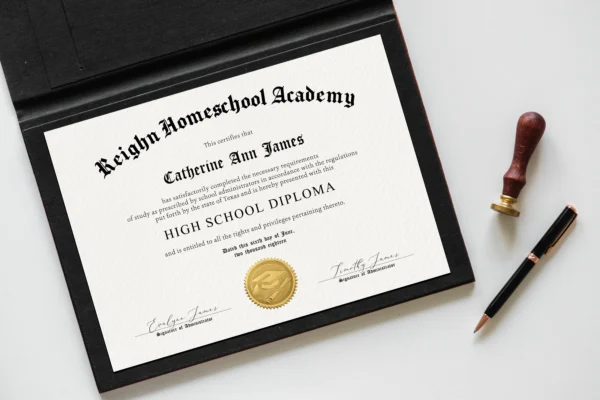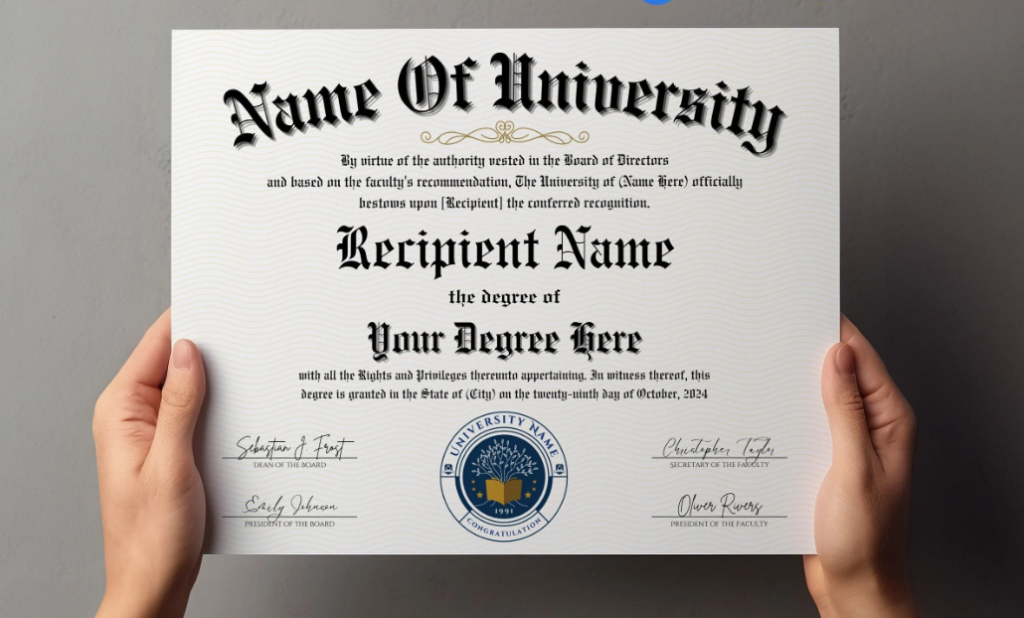Fake Diploma Review: How to Spot Scam Websites Before You Lose Your Hard-Earned Money

28
AUG
Fake Diploma Review: How to Spot Scam Websites Before You Lose Your Hard-Earned Money
Introduction: Why a Fake Diploma Review Matters
Thinking about dropping $200–$300 on a realistic-looking replica diploma? Maybe you lost your original in a move. Maybe you want a novelty gift. Or maybe you just want a backup copy that looks impressive in a frame.
Whatever the reason, it’s a fair question: how do you know you’re buying from a legitimate provider—and not from a scam site ready to vanish with your money?
This is where a solid fake diploma review can save you. By learning what to look for—and what to avoid—you can tell the difference between a professional service and a shady operation. And believe it or not, the easiest way to tell the difference comes down to one thing: The samples.
Check the Samples. Seriously.
Legit companies that create replica diplomas will proudly show off their work. But scam sites? They’ll blur out or cover key information on their samples—like the student’s name, major, and graduation date. That’s your red flag right there. Why hide these details unless they’re trying to conceal something?
Why People Even Consider Replica Diplomas, and Why a Fake Diploma Review Matters
When people hear the phrase “fake diploma,” they assume it’s about deception. But the reality is far more nuanced.
People buy replica diplomas for a variety of reasons, and many buyers are simply looking for:
Replacements for lost originals – Universities don’t always make it easy (or cheap) to replace a diploma. Ordering a duplicate can take months, involve endless paperwork, and cost almost as much as tuition.
Novelty or display purposes – Some customers want a diploma for a prop, a gift, or a piece of décor in a home office.
Sentimental value – Maybe the original got damaged or lost in a flood, fire, or move. A replica feels like reclaiming a memory.
Professional presentation – Some people want a realistic-looking copy to display while keeping their original safely tucked away.
There’s a huge difference between using a fake diploma for entertainment or personal display and trying to pass one off as legitimate credentials. And because many providers are not honest, a fake diploma review becomes an essential tool.
A good review helps separate legitimate, quality-focused providers from scammers looking to take advantage of unsuspecting customers. Without it, you’re essentially trusting a faceless website with your money and your personal information
The Scam Playbook: What a Fake Diploma Review Reveals
If you examine enough fake diploma websites, a pattern quickly emerges. A detailed fake diploma review almost always uncovers the same red flags. Here’s the breakdown:
1. Stolen Diploma Images
The most common scam is shockingly lazy: the site doesn’t make its own samples. Instead, it steals photos of real diplomas from graduates who post them online—LinkedIn, job boards, or social media. They crop the photos, sometimes add a fake wooden frame or background, and present it as their own.
If you could clearly see the name, major, and graduation date, it would become obvious that the diploma belonged to someone else. That’s why scammers almost always blur or block those details.
2. Blurred or Blocked Information
This is the classic telltale sign. Scammers cover names, dates, and degree fields to hide the fact the diploma isn’t theirs. They often slap a watermark with the website’s name across the image or crop the text entirely.
A trustworthy provider doesn’t need to do this—they can just use placeholder names like “Jane Doe” or “Your Name Here” and invent a date or degree. If you see blurry or blocked samples, that’s a red flag a fake diploma review will almost always point out.
3. Recycled Samples Across Multiple Sites
If you start browsing multiple replica diploma websites, you’ll notice something curious: the same sample images appear repeatedly. That’s because scammers often run a network of sites with slightly different names, using the same stolen diplomas.
A legitimate provider has their own original designs. Seeing the same image on multiple sites? That’s a clear warning sign. A thorough fake diploma review helps uncover these repeated scams.
The Fake Diploma Review Logic Test
Here’s a simple mental exercise I recommend in any fake diploma review:
If a company really created the diploma, why would they blur the name?
Why block the degree field instead of showing one?
Why hide the date if it’s just a sample?
Scammers claim they’re protecting “customer privacy.” But if these were actual samples they made themselves, they could easily generate fake examples. The truth is, the blurring exists because the samples are stolen, and a good fake diploma review cuts through that excuse.
Ask yourself: if a company is willing to deceive you on something as simple as a sample image, what else might they lie about? Delivery time? Product quality? Whether you’ll even receive anything at all?
Real Fake Diploma Review Stories
Stories from real people illustrate the risks more clearly than any warning. These examples often show up in detailed fake diploma reviews:
Case 1: The Vanishing Site
A buyer paid $250 for a “custom replica diploma” and was promised delivery in 10 days. Two weeks later, nothing arrived. The site stopped responding to emails. A month later, the domain was gone.
Case 2: The Poor Quality Trap
Another customer did receive a diploma—but it looked like it had been printed on copy paper with a cheap inkjet printer. The seals were pixelated, the text crooked, and the “parchment” was just regular white office stock. Their experience was summed up in a fake diploma review: “I could have done this on my home printer.”
Case 3: Identity Theft Risk
Some scam sites don’t just take your money—they harvest your personal data. Buyers reported spam emails, strange phone calls, and even fraudulent charges appearing on their credit cards. A solid fake diploma review often highlights this danger.
Case 4: Positive Experiences
Not every review is negative. Some buyers share experiences with legitimate providers who produce high-quality replicas, ship on time, and offer excellent customer support. These reviews are crucial—they show the difference between trustworthy and deceptive sites.
Fake Diploma Review Checklist: Step-by-Step Protection
Want to make sure your money is safe? Use this fake diploma review checklist before ordering:
1. Examine the Samples
Legit companies proudly display complete, clear examples. Scammers blur and block details. A thorough fake diploma review will point this out.
2. Look for Consistency
Do the fonts, seals, and layouts match across samples? Or do they look like a grab bag of random, stolen images?
3. Search for Independent Reviews
Don’t just trust testimonials on their own site. Google “[Site Name] fake diploma review” to see what others say. Look for posts on forums, Reddit, and verified review platforms.
4. Check Contact Info
Real businesses list a working phone number, physical address, and reliable email. Scammers often hide behind a generic contact form.
5. Trust Your Gut
If the website looks hastily put together, uses stock images, or has awkward grammar, that’s a warning. A good fake diploma review will help confirm your instincts.
Why a Fake Diploma Review Can Save You More Than Money
Some people shrug and think, “Worst case, I lose $250.” But ignoring a fake diploma review can cost much more:
Your personal data could be stolen or sold.
Your reputation could take a hit if you try to use a poor-quality diploma for display.
Your peace of mind takes a hit—you’ll feel cheated and regretful.
Taking a few minutes to research reviews can prevent weeks of frustration and financial loss.
Beyond Money: Legal and Emotional Risks
It’s also worth mentioning the legal and emotional risks:
Some replica diploma sites operate in gray areas legally. Using a diploma to misrepresent credentials could lead to fines or even criminal charges in some contexts.
Emotional stress matters too. Being scammed—even for a relatively small amount—can make you feel violated, embarrassed, and frustrated.
Scammers often prey on trust and nostalgia, which makes the emotional impact more intense.
A well-written fake diploma review will often address these risks, offering readers not just practical advice but perspective on the broader consequences.
The Bottom Line
This is all about how to spot a fake diploma before it fools you. If a diploma site is hiding essential details in their sample images, they’re not protecting customer privacy—they’re hiding the fact that the diplomas aren’t theirs to begin with. They’re lying to you from the start.
And if they’re willing to deceive you about that, what else are they lying about? The quality of the product? The delivery time? Whether you’ll even get anything at all?
Do your research, scrutinize the samples, and trust your instincts. Use independent fake diploma reviews to guide your decisions—they’re your best defense against losing money and personal information.
Bottom line: If the samples are blurry, the truth probably is too.




